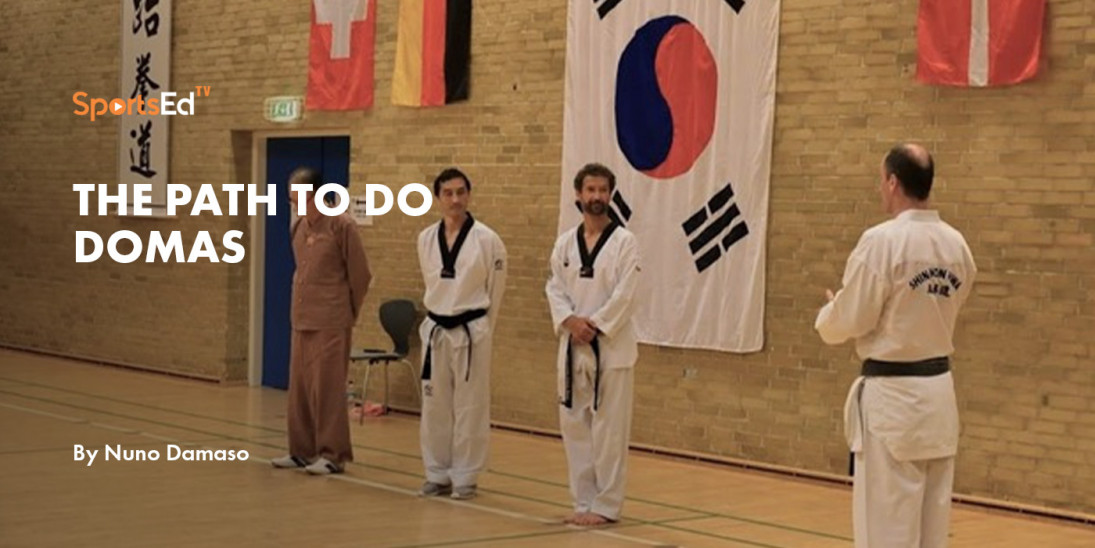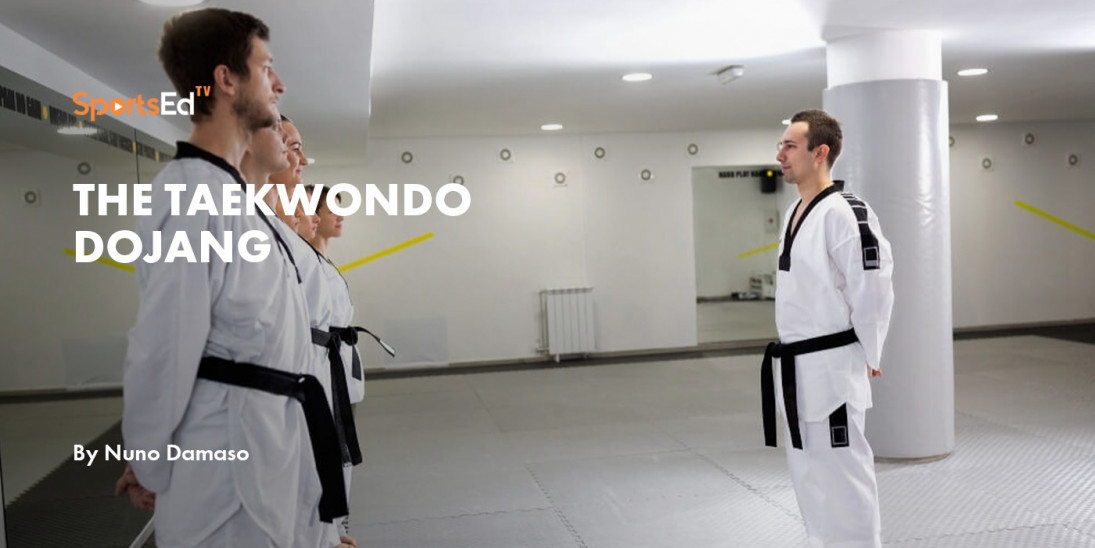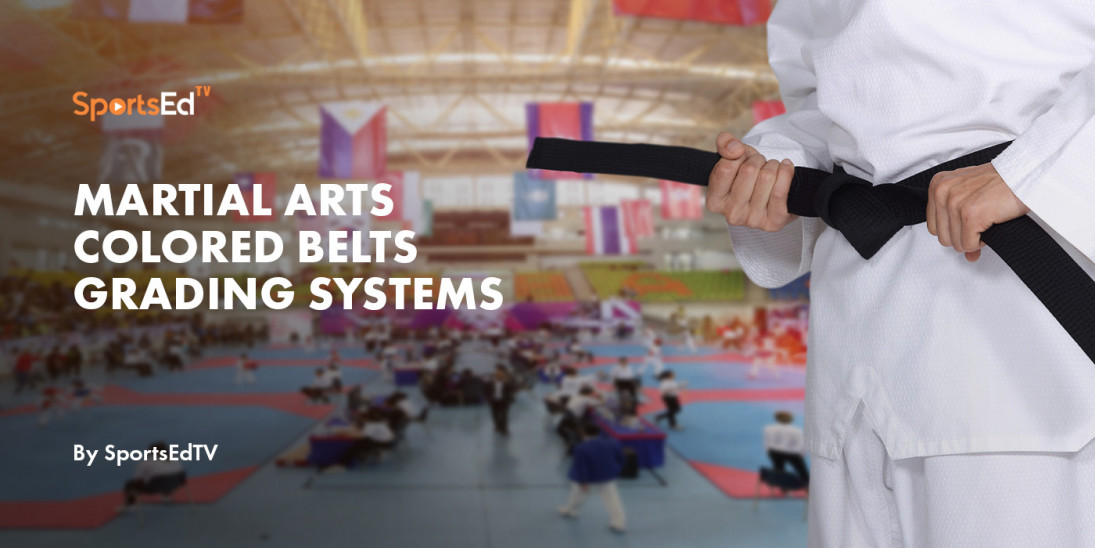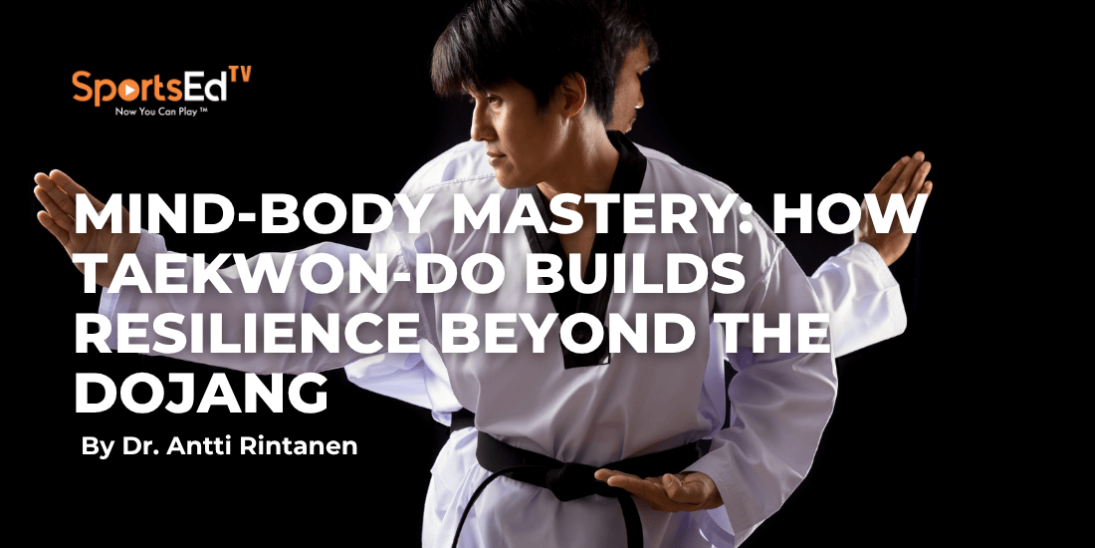Taekwondo
Welcome and thanks for visiting...

Values in Taekwondo
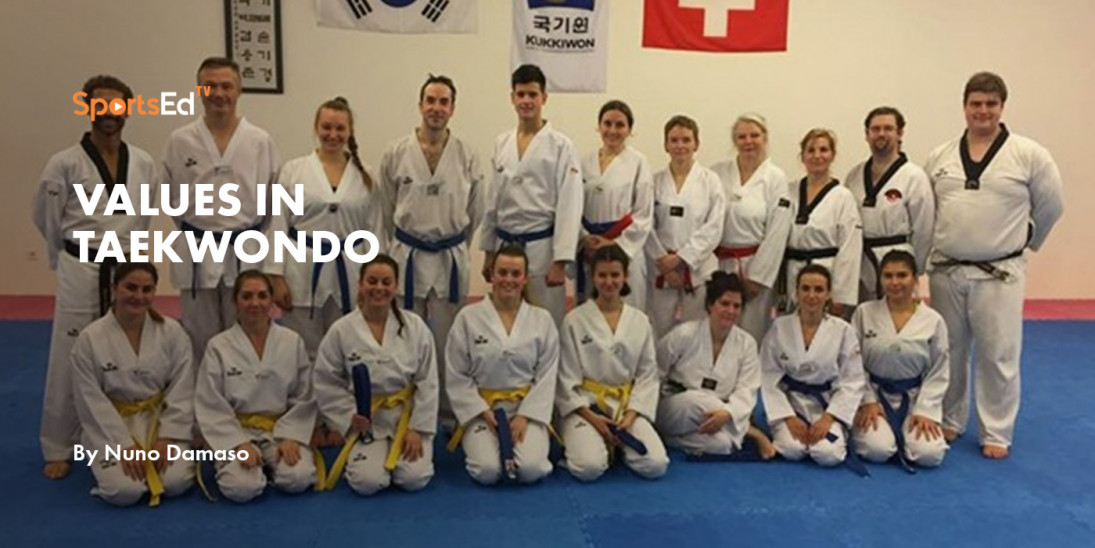
Values
Respect
Gishin Funakoshi, the father of modern karate said that karate began and ended with respect. The same is obviously true of Taekwondo. Most of the rituals performed in the martial arts aim to develop respect in the dojang and between practitioners.
The practice of Taekwondo requires a great sense of responsibility. At a certain stage, the advanced practitioner literally becomes a knife. This power is obviously dangerous if moral values do not go hand in hand with the level of efficiency of the practitioner. This is also where the notion of respect for the integrity of others comes into play.
Each exercise begins and ends with salvation. It reminds us that we have a human being in front of us and that we must respect his physical integrity during the practice.
The salvation and respect it implies are also guards against the rise of the ego and the taste for power present in each individual.
It is quite normal that when a practitioner acquires new skills in the martial art a certain sense of self-confidence, power or even arrogance and power may surface. It is exactly at that moment that the notions of respect are paramount. The role of the master is not the least. He must be able to recognize spillage and negative attitudes during practice. The body has its own language and there are a multitude of revealing signs in this area.
The student will learn to adapt his strength according to his partner's level. This will force him to learn to control himself and not to abuse his abilities. A partner is also a mirror that teaches us a lot about ourselves. This exchange can only take place in mutual respect.
The regular practice of respecting rules and others should ultimately also teach us to respect ourselves and to behave with dignity and integrity.
Patience
Isn't it said that patience is the mother of all virtues?
Patience plays a key role in the practice of traditional martial arts such as Taekwondo. Indeed, martial arts aim at perfection and absolute control of movement through incessant repetition of gestures and techniques. It is this repetition that will allow the practitioner to assimilate and automate the technique in order to be able to use it in case of danger. It goes without saying that patience plays a predominant role in this process.
Patience here is also linked to modesty and endurance. It takes a certain humility to accept the fact that the technique is constantly being improved and that this process actually has no limits. Moreover, progress in martial arts is not linear. If they are spectacular and very visible outside the first years of practice. It is not the same for the following years. The practitioner will always need more patience and progress will be made at the level of very small technical details and especially at the level of sensations.
Patience is obviously also required in the transmission of Taekwondo. The same corrections must be repeated over and over again with understanding, empathy and patience.
A very interesting aspect of martial arts is also the play between extremes. Here I am talking about opposing forces and processes such as strength and release or speed and slowness. Martial arts teach us self-control also through movement and especially stillness. The practitioner must be able to accelerate a movement in an extreme way and then stop and control it.
This aspect also teaches us patience in a natural and non-cerebral way.
Politeness
Funakoshi also used to say that martial arts share beginnings and endings with politeness.
In a dojang worthy of the name, politeness is omnipresent. It can be recognized in the greeting before and after the class. In the correctness of the students' manners and dress. The culture of Dojang is marked by politeness and respect and this should be felt from the first step in the school.
The martial arts aim to develop the body and mind. The incessant repetition of techniques aims to develop the perfect gesture and thus efficiency. At the moral level, we seek to raise ourselves spiritually and to polish our character. In a dojang the practitioner is constantly the witness of his own behavior and he forbids himself any deviation at the ethical level. He constantly uses correct language and avoids vulgarities or "cheap" themes. He controls his temperament and refrains from getting carried away both in combat and during the rest of the classes. All these aspects combined with the rituals of salvation of the teacher, the partner and the dojang contribute unceasingly to develop the politeness of the practitioner.
The salute to the partner is also very important. We respect our face and are aware of our responsibilities during assaults.
Politeness plays an extremely important psycho-regulatory role in the practice of Taekwondo. One could say that it is a kind of guardrail to the arrogance that can develop the feeling of power that one feels when one becomes aware that our body has become a dangerous weapon.
True Taekwondo practitioners can be recognized by their politeness, respect and modesty inside and outside the dojang.
Modesty
Like politeness and respect, modesty is practically a basic condition for learning martial arts.
Indeed how could we teach dangerous techniques to arrogant and disrespectful individuals? This would be completely irresponsible and harmful.
Modesty as well as politeness is part of the life of the dojang. The Asian salute head down is a first sign of modesty. In the same way the salute and respect to the master teach the student to respect his place in the hierarchy. In the same way the practitioner of martial arts follow very strict rules of behavior within the framework of his practice. Parameters such as obedience for example are also there to teach the student to leave his ego in the locker room. Ego and vanity are probably the counterpart of modesty. These character traits hinder learning on the one hand and are also very dangerous in the practice of a martial art.
In the practice of combat the lack of modesty can have fatal consequences. One should never underestimate an opponent in any area. This attitude will result in complacency and lack of attention.
From a pedagogical point of view, the lack of modesty definitely hinders learning and leads to complacency and arrogance.
A very effective way to work on modesty is to repeat the basic movements in each class regardless of grade or experience. Always question everything and above all question yourself constantly.
A true practitioner always has a "BEGINNER 'S MIND".
Courage
Courage is obviously a basic condition for the practice of a martial art.
But what courage are we talking about here?
It is of course on the first level the courage to face an opponent.
Some individuals are innately gifted with courage and do not really have a problem with fighting. Others who are more shy have to learn to overcome their fears and take the plunge.
Of course, we cannot talk about courage without talking about fear.
What type of fear is it? In the exercise of combat, fear is self-evident. Indeed each blow dealt is a direct attack on our physical or even emotional integrity.
Fear and pain are omnipresent in the fight against it. At the level of the beginner we can even say that fear will accentuate his pain. Indeed the apprehension will in a way amplify the pain, as a material confirmation of the fear. With time, the Taekwondoist apprentice learns to demystify fear and pain. He now knows his sensations. If they are obviously unpleasant, they become less and less dramatic with experience. In fact, courage does not consist in not being afraid, but rather in accepting one's fear, demystifying it and using it as a positive driving force.
Fear will generate a large production of adrenaline. The famous danger hormone. This one will allow us to be stronger, faster, more efficient and more clairvoyant. It is still necessary to trust each other, to let go and accept to enter this process.
Confronting and demystifying one's fears can be an extremely rewarding process, especially for shy and fearful people. Being able to witness one's own emotions, to manage one's fears through acceptance and breathing are great assets for many situations in daily life.
The lessons taught in the dojang are of little use if they do not have repercussions on our daily life. Courage may seem an outdated value today. Why is that? Because we tend to associate this word with acts of warlike and spectacular bravery...
Courage and fear are omnipresent mechanisms in our lives. As we have seen above, courage at the first level in combat comes from the threat to our physical integrity.
Fear obviously has other faces much more subtle than the purely physical and material aspect.
We could call it fear in the second degree.
We are all afraid of not being loved, afraid of not being enough, afraid of disappointing, afraid of losing, afraid of not reaching our goals, afraid of being alone, afraid of missing our life and obviously last but not least afraid of dying.
Courage in combat teaches us to face fear and to penetrate its essence. We need the courage to go and talk to this "ghost" and get to know him.
It is at this price that we can demystify our fears, which in the end are always much less dramatic than they seem. To achieve inner freedom, we must confront our fears and weaknesses...this is spiritual, human, emotional courage.
This can bring about a very great transformation in our lives and allow us to become and assume who we are. Without fear of pleasing or displeasing, disappointing or not being enough.
The ultimate goal of martial arts is the victory over oneself and one's ego much more than over an external opponent.
Integrity
The warrior fights for a just cause. Honor and integrity are his backbone.
The honest martial arts practitioner is studious and bends to a physical and mental discipline of every moment. He strives to control his body as well as his mind.
On the other hand, it follows a moral code called "musado". The latter refers to a set of values, cited in this work that the practitioner integrates into his daily life.
Like every human being he will be tempted by greed, selfishness, vanity and power. He has learned through relentless training to discipline his mind and to observe his emotions and reactions which can constantly manipulate him in case of mental weakness.
He thus developed a deep sense of ethics. He is also aware that his behavior must be exemplary at all times and that his abilities must serve and not harm society. All power brings responsibilities with it and the true martial arts practitioner is fully aware of this.
Integrity therefore consists in striving to live and carry values without falling into the traps of power and vanity. The great physical and mental discipline required in the practice of martial arts will be a great help to stay on the right path.
Funakoshi has remained known in history not as a highly talented practitioner but as a person of perfect integrity and exemplary conduct.
The same goes for Mas Oyama who wrote a book at the end of his life about the values and moral code of martial arts for fear that the essence of his teaching would be misunderstood.
Integrity is therefore about living and acting in harmony with one's values.
Discipline
Discipline is the basis of martial arts teaching.
Beginners are often shocked by the extreme discipline and rigor that reigns in a dojang or in a martial arts school in general.
This discipline is indeed quite close to what one can find in the army. This is obviously not by chance. Modern Taekwondo has been codified by the military. The teaching methodology was also extremely influenced by military discipline. Is this a coincidence? Of course not. We are talking about martial arts, therefore war arts.
Many practitioners are of the opinion that this era is over and that it is useless or even ridiculous to practice Taekwondo in this martial and absolute spirit. With the arrival of the Olympics, Taekwondo has become a martial sport.
Athletes seek victory by accumulating points and not the elimination of the opponent. All this is very good and very respectable.
In order to make Taekwondo better known, more popular, it had to be democratized. So we managed to eliminate all that could be too disturbing or unpleasant.
In order not to shock for example the world federation currently speaks of "players" and not of "fighter" to name the competitors. The goal is clear, to make Taekwondo accessible to all and as enjoyable as possible.
Discipline, obedience and hierarchy are very disturbing for many.
Paradoxically, these are values and concepts that are currently cruelly lacking in youth in our modern, value-diminishing societies. So let us return to this discipline that is so disturbing today. What are the reasons for this so hermetic discipline in martial arts and what does it consist of?
It is first of all a question of understanding that martial arts are not and will never be a game! The sport has a very pleasant playful character which makes its charm. Martial arts were created for combat. It is a completely different approach. The combat aspect brings with it the notion of danger and automatically the notion of responsibility.
We don't play with weapons, it's well known!
From this point of view, martial arts must be practiced with a lot of seriousness and rigor for several reasons. The practitioner must understand the seriousness of his practice. His body becomes a dangerous weapon. He must therefore discipline himself as much as possible to obtain a total control of his body and mind in order to master this weapon. This is a responsibility related to the acquired power.
At the training level, the practitioner is responsible for the physical integrity of his partner. He must show mental discipline, respect and self-control, a value we will come back to later.
From a learning point of view, discipline and rigor bring definite advantages. The student avoids unnecessary conversation during training. He demonstrates total concentration on learning the gesture throughout the entire course. He immerses himself body and soul in the here and now. This rigor allows him to automate the gesture and thus make it effective in case of danger. On the other hand, he develops in a spectacular way his strength of concentration and mental endurance. This rigor and discipline should also bring benefits in his private and professional life.
"Hard work beats talent." Recent studies in the arts and sports have recently shown that hard work can replace and even supplant talent. These studies insist that the most successful artists or athletes have the discipline to repeat tirelessly the gestures they are weak in as well as the gestures their peers do not like to work or repeat.
As in martial arts, these people repeat the "basics" tirelessly, even after decades of practice. To conclude, I would say that we can associate this discipline with modesty and this famous beginner's spirit that allows us to keep freshness and enthusiasm after years and years of practice.
Self-control
The notion of control is omnipresent in the learning of martial arts. One speaks here as much about emotional control as technical control.
In technical learning these two parameters are in fact intimately linked and inseparable.
As mentioned above, owning a weapon brings with it a great responsibility. Self-control as well as respect and modesty are in some ways safeguards against all kinds of abuses...
Let's imagine an angry and unpredictable person with no moral sense who would practice martial arts without respect and consideration for others. It goes without saying that a master or pedagogue worthy of the name would not want to train this kind of individual. Such a person is of no use to society.
This is where discipline and rigor in the teaching of martial arts come into play once again. The student simply does not have the right to lose control and must constantly show respect for others during classes. If the student is not able to do so or does not follow the rules, the teacher will have to guide him or her with understanding and in the worst case exclude him or her from teaching.
On the other hand, this rigor can have great benefits on the development of the personality of this adept who will learn to master himself which will be very beneficial in many ways. He will also learn a form of respect and empathy towards those weaker than himself during the ordeal of combat if he is able to calm his primary impulses.
From a combat point of view, however, it is precisely the control of one's emotions and the management of stress that will make one's actions fair and effective.
Fighting always brings fear and pain with it. Beginners react in two distinct ways. Some are paralyzed by fear and lose all of their means. Others react with hyper-aggressiveness also correlated with the lack of fear management.
The experienced practitioner will be able to channel his fear and even use it as a motor. He will thus be able to optimize his resources through self-control.
Endurance
The martial arts aim at the development of the personality and the search for perfection in the gesture.
Endurance is necessary at different levels. The practitioner of martial arts seeks to obtain through the repetition of the gesture its total automation. This is a long and ungrateful process. Only thousands of repetitions over several years can achieve this goal. Endurance, patience and modesty are central here.
An avowed goal of martial arts is also the total perfection of technique or gesture. This is a goal that is in fact unattainable since perfection does not exist. As the practitioner progresses, his idea of what perfection could be changes. Indeed his coordination becomes more and more refined and his sensations more and more subtle. Ironically he becomes more and more aware of his gesture and therefore also of his defects.
This process is both very thankless and rewarding. Indeed the practitioner will understand that the path is endless and at the same time it is what makes it so interesting and beautiful.
Physical and Mental Levels
Martial arts practitioners seek to overcome elements such as pain and fear to increase their effectiveness in combat.
Through interminable and painful exercises the practitioner learns not to give up and to put aside his suffering as well as his fear. This process obviously requires enormous mental as well as physical endurance. Here we are very far from the goals sought by game or playful sports.
This type of practice aims to develop strength of character and to prepare for the test of combat that does not allow for flaws or weaknesses.
Spiritual Level
As we said above, martial arts also aim at developing personality and perfecting our being.
The rituals practiced in dojang and the moral code are in fact means to achieve this goal.
The sincere practitioner will try to integrate the above-mentioned Taekwondo values into his daily life. If he reaches the backbone of his life will be his values and a form of virtue lived in daily life.
In order to do so, he will live consciously and will always have an introspective view of his thoughts and actions. This process too is endless and requires a lot of courage, honesty and stamina.
It goes without saying that our human condition does not allow us to be unfailingly irreproachable. On the other hand, this process can embellish our person and make it grow on a spiritual level.
Like technical perfection, spiritual growth called OD in Taekwondo are relative ideals but noble in their essence.
The martial arts are therefore a path of permanent growth that aims to develop the physical and spiritual potential of each individual.
It goes without saying that this process requires an extraordinary form of self-sacrifice and endurance.
Dignity
The martial arts practitioner has noble ideals and a dignified behavior.
Dignity was probably the word most used by Master Kim Myung Soo who came to implant Taekwondo in Switzerland.
One only had to look at the gait, dress and behavior of this great master to understand that the moral code and ethics were at the center of his teaching. Dignity is important in martial arts in many ways.
Indeed, combat and violence are not particularly beautiful themes. The fighter or warrior without values and ideals has something very vulgar.
For true martial arts practitioners, violence is to be avoided at all costs and used only as a last resort. We seek to know ourselves and face our own demons such as fear, vanity, power and egocentricity. This work on oneself brings a form of deep respect towards others and oneself.
This type of behavior combined courtesy and modesty naturally brings a form of dignity.
If we finally talk about martial arts masters and not teachers, that's what it's all about. The martial arts have for goal the harmonious development of the body and mind.
A true martial arts expert should behave appropriately and in accordance with his skills. When we talk about mastery, we also mean mastering both technique and character.
Read more:

